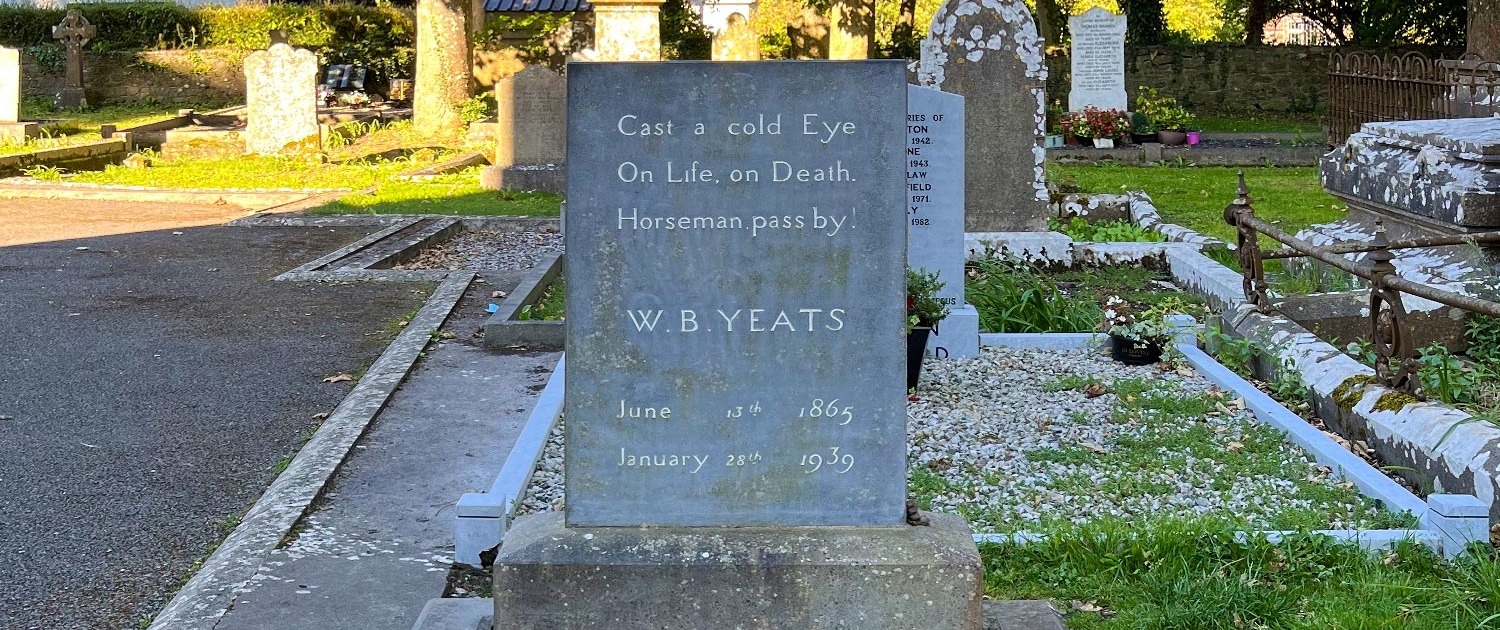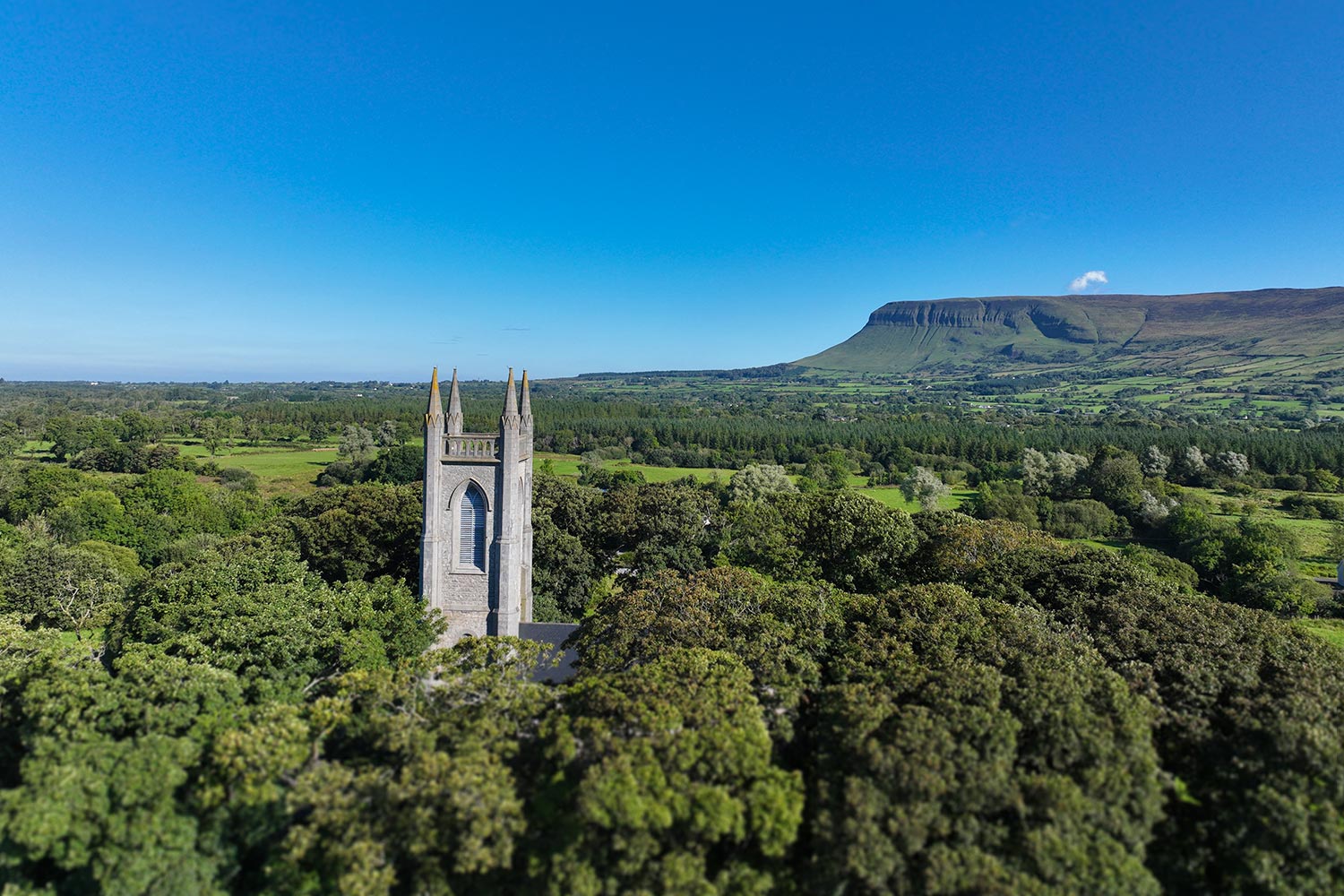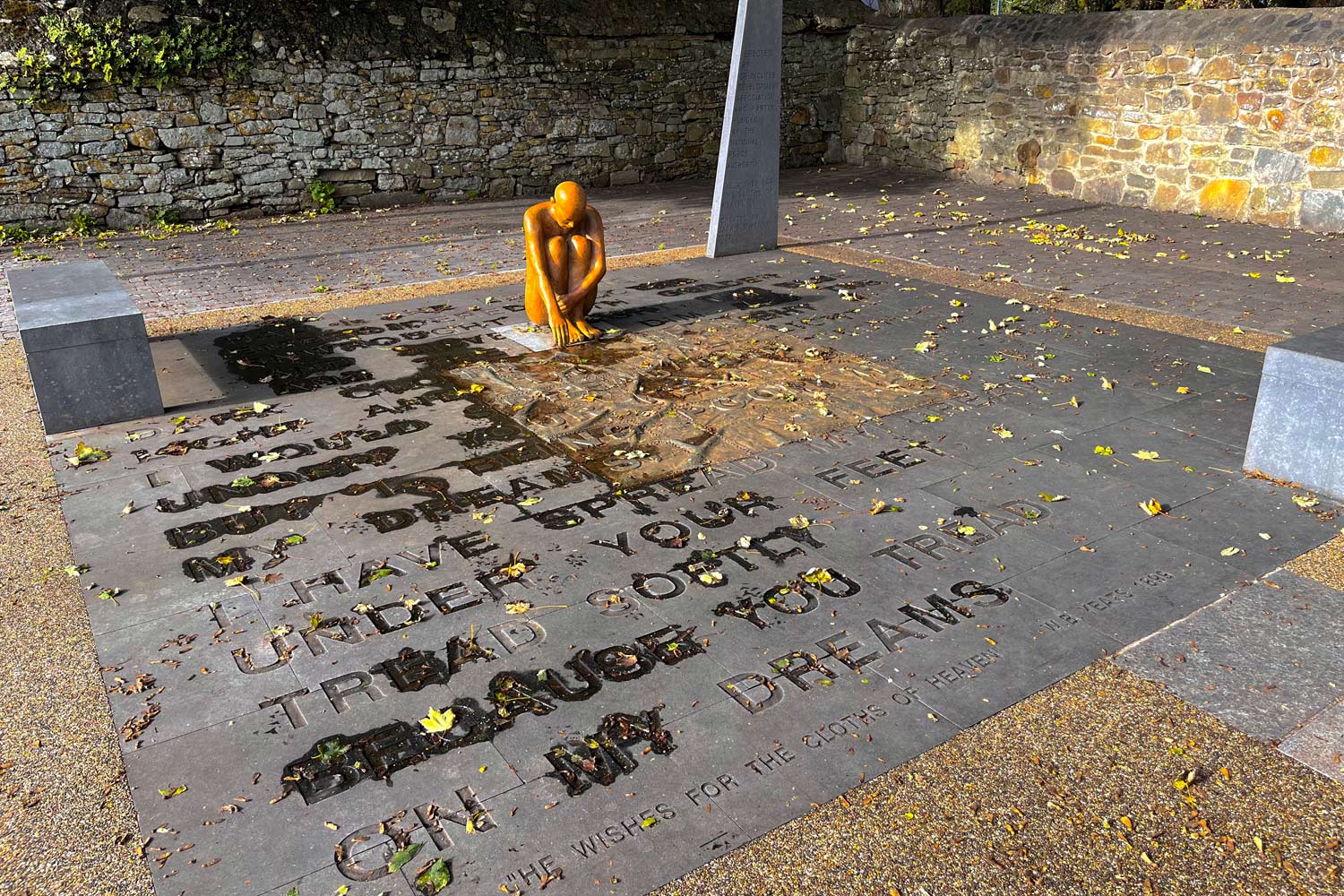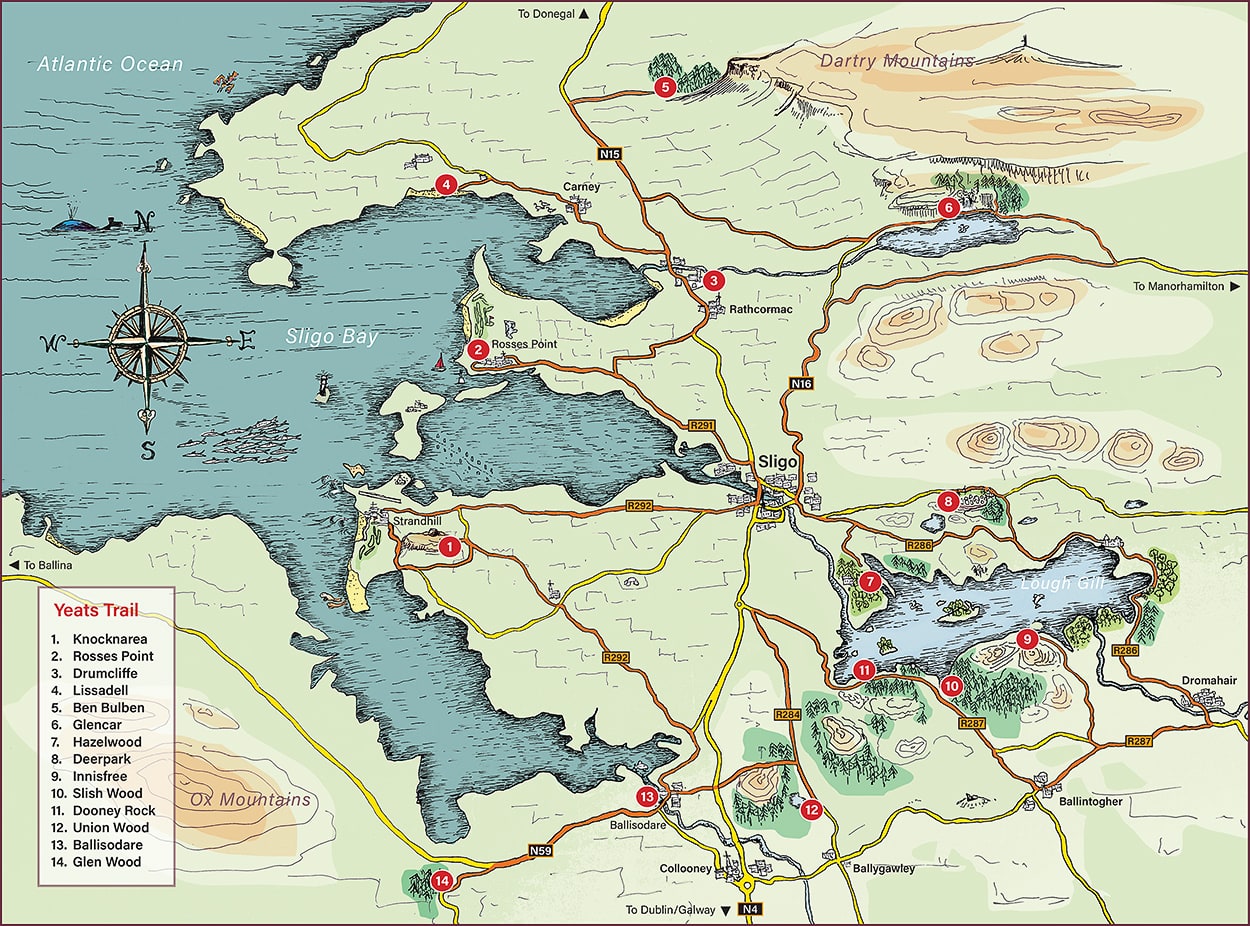Here, under Ben Bulben mountain, where his great-grandfather had been rector, the roads were lined with hundreds of people who came to pay their respects as the great poet made his final journey home. The inscription on his gravestone says:
Cast a cold eye
On life, on death.
Horseman, pass by.
from ‘Under Ben Bulben’, 1938-’39.
The message is a reminder to the reader of their own mortality. ‘Siste Viatore’ means stop traveller, ponder mortality, and it is a form that was used in Europe.
It is interesting that the poem was written in September 1938, when he knew that death was approaching. The poem is six stanzas long in which he gives his final thoughts on a range of subjects.
The installation at Drumcliffe by artist Jackie McKenna is a poignant reminder of the poet’s vulnerability, especially in the face of unrequited love. In eight short lines, his tender words demonstrate that in the absence of wealth, all he has to offer his would-be lover are his words and dreams.
from The Wind among the Reeds (1899)
He Wishes for the Cloths of Heaven
Had I the heavens’ embroidered cloths,
Enwrought with golden and silver light,
The blue and the dim and the dark cloths
Of night and light and the half light,
I would spread the cloths under your feet:
But I, being poor, have only my dreams;
I have spread my dreams under your feet;
Tread softly because you tread on my dreams.





